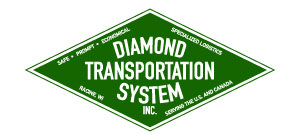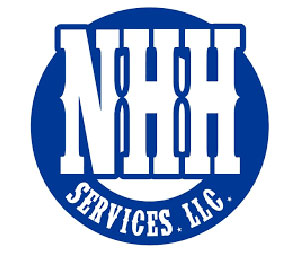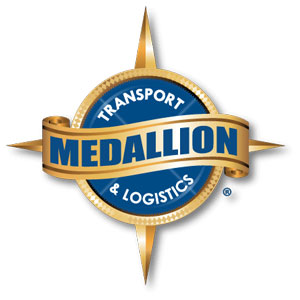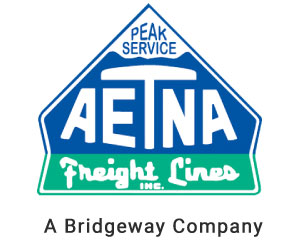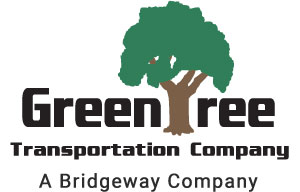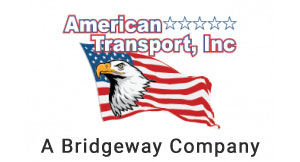What is the Difference Between Wide and Oversized Loads?
When it comes to shipping equipment and parts, standard shipping containers can handle a vast assortment of items. However, not everything can fit into a shipping container, which is where wide loads and oversized loads come into play. Because federal and state regulations oversee trucking guidelines, it’s crucial to understand what constitutes a wide or an oversized load. Knowing these essential differences ensures that you can ship your materials legally and without any potential headaches.
So, with that in mind, let’s dive into the specifics of wide vs. oversized loads and how to ship them.
What is a Wide Load?
Although maximum shipping dimensions vary by state, the general guidelines state that all loads should be up to 8.5 feet wide, 53 feet long, 8.5 feet tall and 46,000 pounds. For a load to be considered “wide,” it must exceed the 8.5-foot threshold. In this case, the shipment doesn’t exceed any other guidelines, such as height or weight.
Since standard highway lanes are 12 feet wide, any load that exceeds this width will likely require pilot vehicles to watch out for obstacles or potential issues along the route. If the load’s width exceeds 16 feet, it will fall under a “super load” category, meaning that road closures and police escorts are likely necessary since the materials will infringe upon traffic conditions.
Again, each state sets its own guidelines and restrictions, so if you’re shipping a wide load through multiple states, you have to get clearance in each one. You might also have to adjust your shipment details as soon as you cross state lines.
What is an Oversized Load?
Technically, all wide loads are oversized loads, but not vice versa. Oversized loads are any shipments that exceed the guidelines we outlined above. For example, let’s say you’re hauling some construction equipment that fits the height, weight, and length parameters but weighs 50,000 pounds. Even though it doesn’t affect other traffic conditions because of its dimensions, the load is still oversized because it exceeds weight restrictions.
As with wide loads, the guidelines for oversized shipments vary between states. For example, your load may be considered oversized if it’s over 50 feet long in one state but 53 feet in another. Again, if you’re hauling equipment across state lines, you have to know the rules so that you can comply with them every step of the way.
Typically, wide and oversized loads can include:
- Construction Equipment (Cranes, Bulldozers, etc.)
- Manufactured Homes
- Construction Materials (Steel Beams, Pipes, etc.)
- Agricultural Machinery (Combines, Backhoes, etc.)
How to Prepare to Transfer a Wide or Oversized Load
Before shipping your parts or materials, you need to figure out the proper logistics and legal hurdles to overcome. Here is a rundown of the components to prepare for ahead of time:
- Permitting – Each state has its own permitting requirements, so you have to talk with individual departments of transportation. That said, if your shipment only stays on federal highways within a state, you may only need permits from the USDOT. Even then, it’s still a good idea to check with each state to ensure that your load doesn’t get pulled over.
- Scheduling – Because wide and oversized loads affect traffic patterns and require extra visibility, most states require shipments to move during the day. If you’re using pilot vehicles, you can only be on the road from 30 minutes before sunrise to 30 minutes after sunset. So, you’ll need to plan your route accordingly.
- Signage – Wide and oversized loads require extra signage and lighting to notify other drivers of their presence. These indicators are vital because they could cause the shipment to get pulled over otherwise.
- Safety and Security – Since these loads can become dangerous if they shift too much, it’s crucial to tie everything down as tightly as possible. Also, keep in mind that you may be required to break the equipment down into smaller parts if possible. As a rule, if at least one state you’ll pass through requires breaking down materials, you should do that before shipping it. This way, you can avoid costly delays as soon as you cross state lines.
- Pilot Vehicles – Not all wide or oversized loads require pilot vehicles. You’ll have to determine if they’re necessary and the type of signage and lighting they’ll need.
Ship Your Wide and Oversized Loads With Osage Specialized Transport
As you can see, wide and oversized loads can be challenging to ship from one point to another, especially if you’re traveling through multiple states. Fortunately, Osage Specialized Transport can handle the planning and logistics for you. We have a massive fleet of vehicles that can accommodate loads of all shapes and sizes. Contact us today to find out more.





